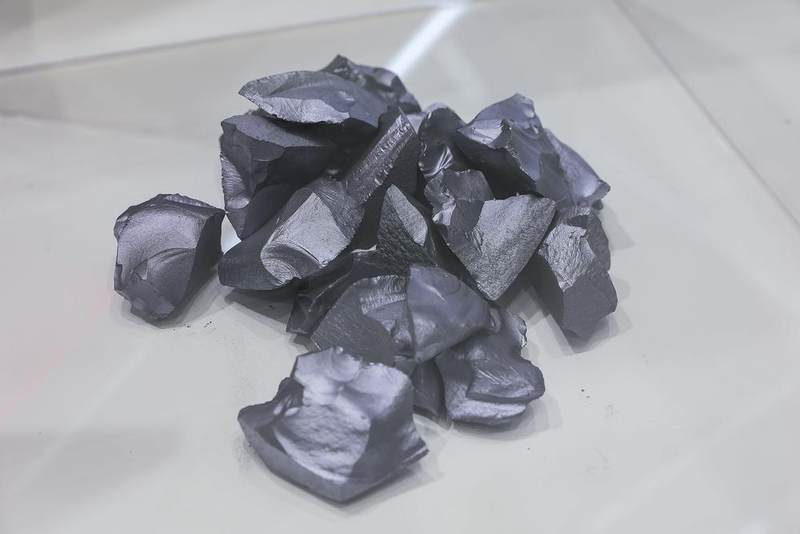“The average transaction price seems to remain stable. In actual trading, it is becoming more and more difficult to lower prices. Silicon materials companies are no longer willing to lower prices and ship as they were in the first half of 2024.”
The market price of polysilicon remains stable. Business people: It has become increasingly difficult to lower prices during transactions

Photo source: Visual China
Blue Whale News February 11 (Reporter Cui Lupeng) At the beginning of 2025, a number of silicon materials companies announced reductions, and at the same time, shipping prices also increased, but the average transaction price remained stable.
Data released by the Silicon Industry Branch of China Nonferrous Metals Industry Association shows that there has been no large-scale signing orders for polysilicon companies in the near future, and the polysilicon market price has remained stable. Among them, the transaction price range of n-type re-charging is 390 – 45,000 yuan/ton, and the average transaction price is 41,700 yuan/ton. The transaction price range of n-type granular silicon is 380 – 41,000 yuan/ton, and the average transaction price is 39,000 yuan/ton. The transaction price range of p-type polysilicon is 320 – 36,000 yuan/ton, and the average transaction price is 34,000 yuan/ton.
“The average transaction price seems to remain stable. In actual trading, it is becoming more and more difficult to lower prices. Silicon materials companies are no longer willing to lower prices and ship as they were in the first half of 2024. rdquo;A person in charge of the market of a silicon wafer company told Blue Whale News that the actual transaction price fluctuated, but the average price remained in place.
Another person in charge of the marketing of a photovoltaic module company revealed to Blue Whale News thatMost silicon wafer companies hoarded a batch of low-priced sources of goods when silicon materials were cut sharply last year. After the Spring Festival, the starting volume of various companies is still climbing. At this stage, silicon materials companies are reluctant to pay higher prices to purchase silicon materials.
The Silicon Industry Association also analyzed that although silicon stocks have shifted from upstream to downstream, the stock is still considerable, and price repair in this link will take time to continue to digest the inventory.
The aforementioned person in charge of the component enterprise market believes thatIn addition to the supply and demand relationship, the price increase of silicon materials will still be driven by the prices of mid-end silicon materials products and back-end component products.At present, the shipment prices of some silicon wafers and components have shown a slight increase. If the upward trend can be maintained for a long time, the price of front-end silicon materials may increase.
According to the latest data released by InfoLink, as of February 6, the average trading price of single crystal N-type silicon wafers with a size of 182-183.75mm was 1.18 yuan/piece, up 12.38% from the beginning of the year; the average trading price of single crystal N-type silicon wafers in the 182* 210mm category was 1.35 yuan/piece, up 20.54% at the beginning of the year
In the component sector, the phenomenon of domestic low-price bidding still exists. Among the bidding results of Inner Mongolia Energy Group’s 3.5GW modules announced on February 5, the winning bid prices were mostly below 0.7 yuan/W, and the lowest winning bid price was 0.661 yuan/W, which was lower than the lowest module price given by the Photovoltaic Association and was raised to 0.69 yuan/W standard.
Overseas, the price of photovoltaic modules in the European market has increased. According to data from Search4Solar, a European online trading platform for photovoltaic products,Recently, European photovoltaic module prices rebounded for the first time after months of decline, with an increase of more than 20%.In this regard, InfoLink analysis believes that the early delivery of low-priced orders for components in the European market has ended, and the spot market price has gradually stabilized. An increase is brewing, and the increase depends on the degree of terminal acceptance.
The above-mentioned person in charge said that domestic group price shipment prices have not yet stabilized, and Europe is the largest overseas market for domestic photovoltaic exports, which is good for group price companies. According to him, at present, there are also differences in judgment on the trend of component prices among major manufacturers. Some manufacturers have considered that the price increase of silicon wafers and battery chips has pushed up costs, and the price for component shipments has also increased by about 0.01 yuan/watt after the holiday; There are also some leading companies ‘current production capacity and inventory are still greater than shipments, but post-holiday prices will be lowered by 0.01-0.05 yuan/watt.
Regarding the price trend of the industrial chain in the first half of the year, the Silicon Industry Branch analyzed that in the medium and long term, as demand stimulates at the beginning of the second quarter, component prices are expected to rise, driving an increase in the prices of silicon wafers and silicon materials. At the same time, the vast majority of manufacturing companies actively fulfill the industry’s self-discipline agreements, and the upstream polysilicon supply and demand relationship has gradually transitioned to a balanced manner. Inventory pressure has been greatly alleviated. Polysilicon prices are expected to continue to have a long-term positive trend in the first half of the year.
Guotai Junan Futures mentioned in its latest research report that in the first quarter of 2025, prices are expected to stabilize due to reduced inventories and demand-driven demand; after entering the second quarter, prices are expected to rise as inventories further decrease and demand increases.



